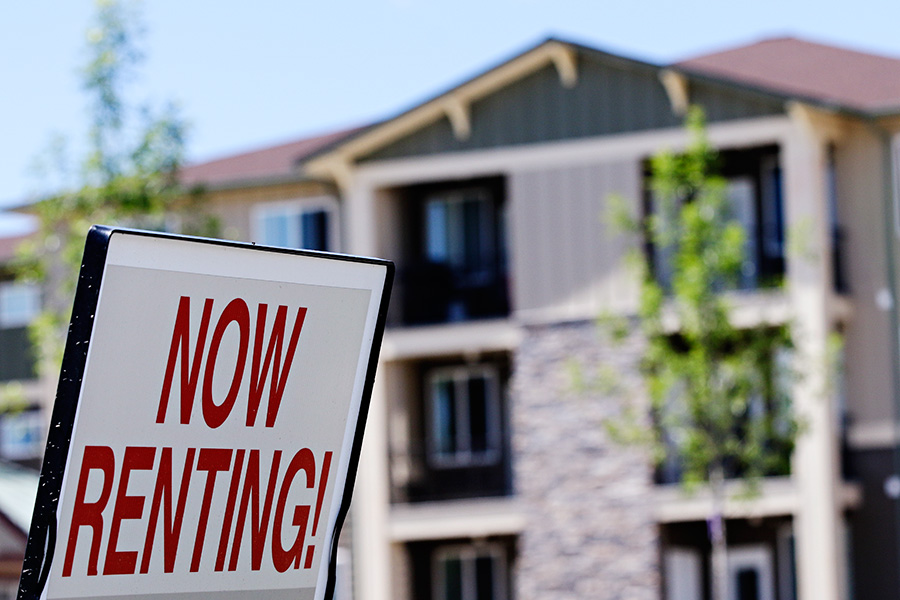Whitefish is not alone in its struggle to provide affordable rental units to its local workforce, but its inventory of cost-effective options is slimmer than ever.
The dearth of workforce housing is a persistent topic plaguing resort communities and mountain towns across the West, where populations have exploded in places that are increasingly dependent on tourism-driven service jobs.
It’s a problem that has prompted Whitefish to begin crafting a master plan to find solutions for an issue that has approached crisis levels.
Across the Flathead Valley, the availability of rental units is extremely low, with fewer than 2 percent of units vacant in Whitefish. Property managers report that vacancy rates have been consistently low year-round, not just during the busy summer and winter months, with more affordable units disappearing from the market inventory at a breakneck pace.
Debra Hill, a licensed property manager with CoRental Property Management in Kalispell, said the company manages more than 500 properties in the Flathead Valley and has no trouble filling vacancies.
“We always have a lot of applicants for everything we advertise. It’s very competitive, and there are a lot more applicants than there are properties,” Hill said, adding that units in newly built apartment complexes are snatched up immediately.
“As fast as they build them, we are filling them up,” she said.
In Whitefish, stiff zoning requirements have caused developers proposing apartment-complex projects to chafe under the constraints, prompting city officials to consider removing some regulatory barriers to promote more affordable housing projects.
It’s not just ski bums struggling to find places to live or being priced out of their community of choice — it’s cops, teachers, nurses, and young professionals, too.
Catherine Todd, of North Valley Hospital, said that out of 405 employees, only 36 percent reside in Whitefish, while 54 percent reside in Kalispell and Columbia Falls because they are priced out of the community in which they work.
According to Hill, the demand for rental units crosses the entire spectrum of demographics.
“It’s all across the board — families, singles, every variation,” Hill said. “Our less expensive properties go faster than our higher-end rentals, but those don’t last long either.”
The reality of Whitefish’s housing market is challenging for a town where 50 percent of the jobs are low-wage, tourism-related positions with an annual income of $27,000. About 56 percent of workers commute to Whitefish from other communities, according to a 2016 Workforce and Affordable Housing Needs Assessment, while 34 percent say they would prefer to live in Whitefish.
About 30 percent of homes are vacant a portion of the year, evincing the rise of second-home purchases, while sale prices for homes have increased 7 percent annually and rental costs have risen 10 percent, compared to a 2.5 percent increase in local wages.
Last year in Whitefish, up to 60 percent of locals paid more than the nationally recommended 30 percent of their income on housing, compared to 35 percent in 2000, relegating those households to the “cost-burdened” bracket.
Meanwhile, about 35 percent of households in the Whitefish area rent their homes, equal to just below 2,300 renter households in 2016.
Rental prices have risen 50 percent since 2010, with a 10 percent increase in each of the past two years. Rents have surpassed pre-recession prices and for some units have reached the point where households could pay less if they purchased the home.
The average market-rate rent is $1,240 for units leased by property managers, which is affordable for a two-person household earning $50,000 per year.
As a result, people are commuting longer distances to their jobs, or leaving the community for good.
The shortage is also attributed in part to a boom in houses being converted into lucrative Airbnb-style vacation homes, which are short-term rentals that eliminate properties from the full-time rental market.
This expanding short-term rental market affects workforce housing on the supply side, by removing long-term rentals and homes previously owned by local residents from the market, as well as on the demand side, through increased job growth to provide services to the short-term visitors and the rental properties.
In August 2016, there were 529 short-term rentals advertised on VRBO from Olney to Columbia Falls, constituting roughly 5 percent of housing units in the area.
Growth in AirBnb listings has also increased, from 15 listings in 2013 to 298 listings in 2016.
Whitefish prides itself on being a year-round, lights-on community, and according to Wendy Sullivan, the principal consultant with WSW Consulting who helped prepare the needs assessment, it’s not too late to reverse the trend of vacation homes displacing primary residences.
“You still have a strong local community in Whitefish,” Sullivan said, noting that 70 percent of the population are primary residents, comparing that figure to Vail, Colorado, where just 30 percent are local.
City officials have proposed changes to city code that would make it easier to develop multi-family housing along the Highway 93 corridor south of Whitefish, but the Whitefish City Council tabled the idea after receiving pushback from two groups who support planning policies that strengthen small business in Whitefish.
